

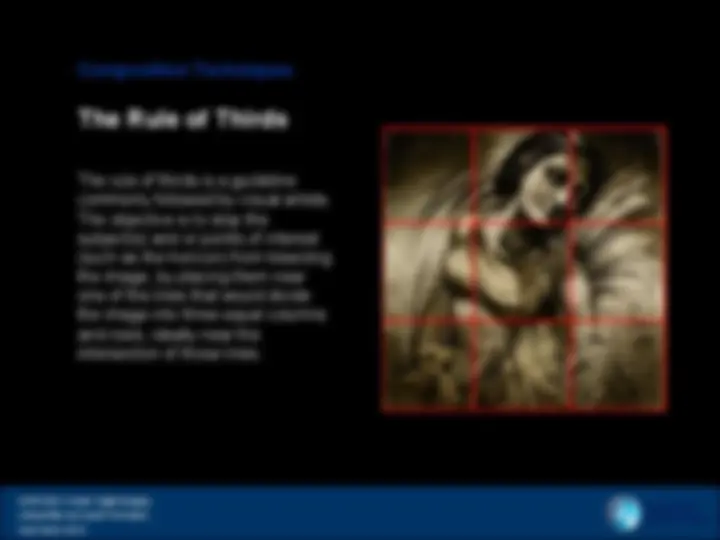
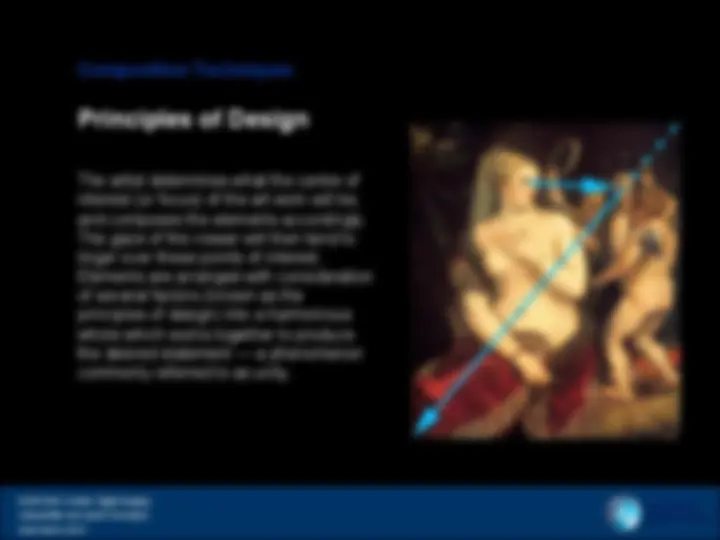







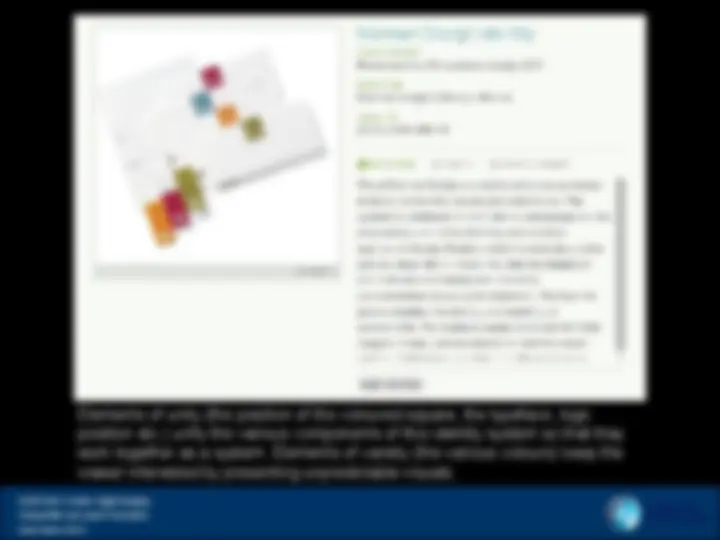

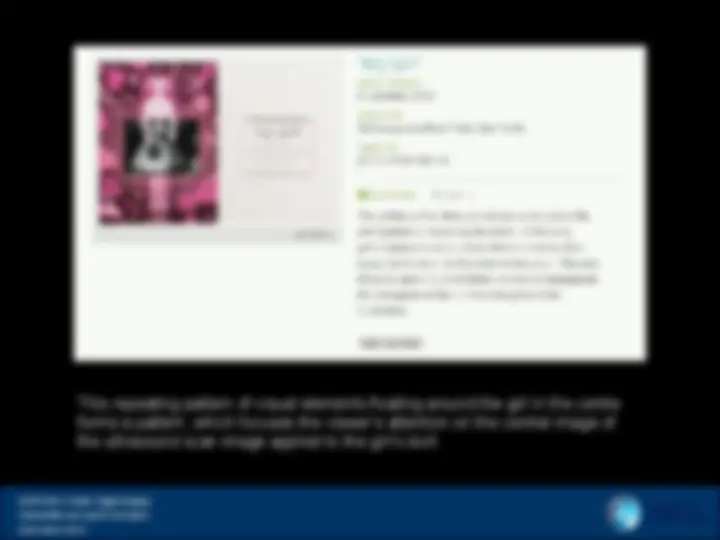

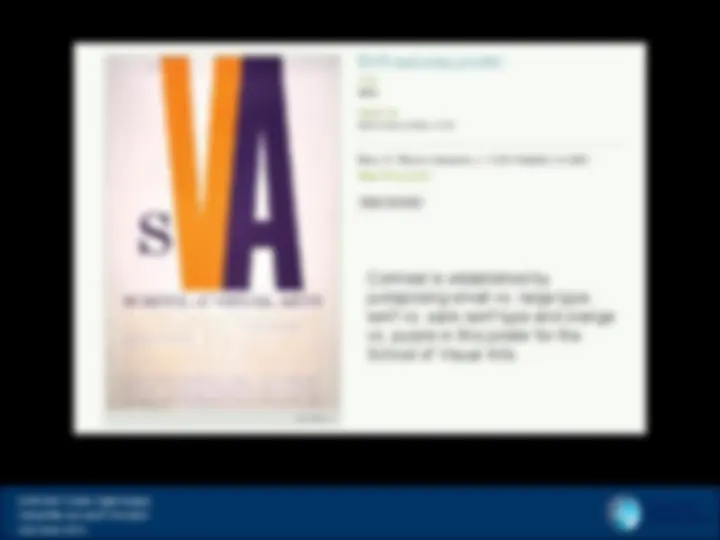
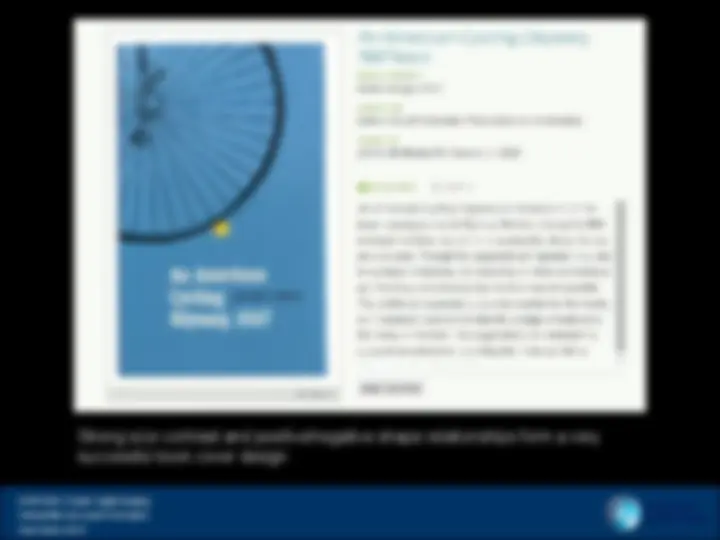






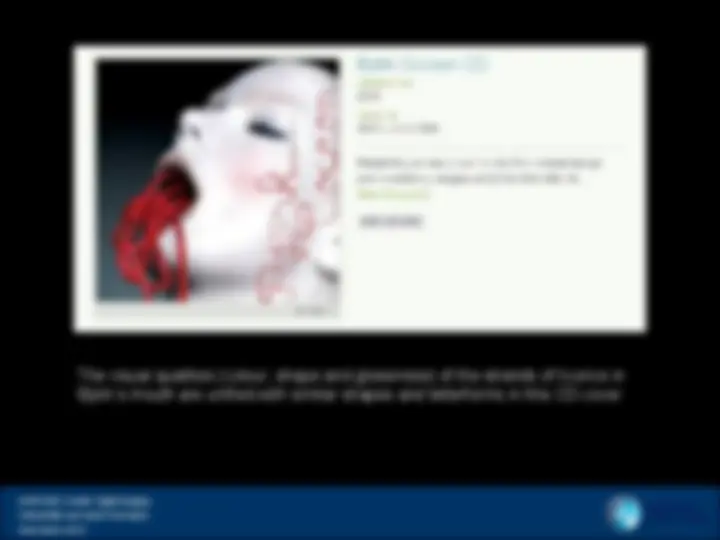










Study with the several resources on Docsity

Earn points by helping other students or get them with a premium plan


Prepare for your exams
Study with the several resources on Docsity

Earn points to download
Earn points by helping other students or get them with a premium plan
Community
Ask the community for help and clear up your study doubts
Discover the best universities in your country according to Docsity users
Free resources
Download our free guides on studying techniques, anxiety management strategies, and thesis advice from Docsity tutors
An introduction to composition and layout techniques in creative digital imaging. The author, Andy Screen, explains the concept of composition as the arrangement of visual elements in a work of art, and discusses various elements of design such as form, value, space, and the rule of thirds. The document also covers principles of design, positive and negative shapes, grids, unity and variety, rhythm, contrast, visual/verbal synergy, graphic resonance, type and image integration, and visual surprise.
Typology: Slides
1 / 39

This page cannot be seen from the preview
Don't miss anything!
































GDES1003: Creative Digital Imaging Composition and Layout Techniques GDES1003: Creative Digital Imaging
GDES1003: Creative Digital Imaging Composition and Layout Techniques
Composition is the placement or arrangement of visual elements or ingredients in a work of art, as distinct from the subject of a work. It can also be thought of as the organization of the elements of art according to the principles of art. In graphic design and desktop publishing, composition is commonly referred to as page layout.
GDES1003: Creative Digital Imaging Composition and Layout Techniques
The rule of thirds is a guideline commonly followed by visual artists. The objective is to stop the subject(s) and or points of interest (such as the horizon) from bisecting the image, by placing them near one of the lines that would divide the image into three equal columns and rows, ideally near the intersection of those lines.
GDES1003: Creative Digital Imaging Composition and Layout Techniques
The artist determines what the centre of interest (or focus) of the art work will be, and composes the elements accordingly. The gaze of the viewer will then tend to linger over these points of interest. Elements are arranged with consideration of several factors (known as the principles of design) into a harmonious whole which works together to produce the desired statement — a phenomenon commonly referred to as unity.
GDES1003: Creative Digital Imaging Composition and Layout Techniques In an informal layout, elements are balanced unequally on both sides of the page. This layout expresses dynamism and energy. This soul music CD uses an asymmetrical layout design to express its lively and dynamic musical style.
GDES1003: Creative Digital Imaging Composition and Layout Techniques One of the most important design decisions is what element to make the most prominent. The most important element in a composition is called a focal point. Emphasis is achieved by position, rhythm, colour contrast, typeface weights and styles. Secondary emphasis points are called accents.
GDES1003: Creative Digital Imaging Composition and Layout Techniques The large circle draws the viewer’s eye by its large size, warm colours, level of complexity and implied lines that point to the centre of the shape.
GDES1003: Creative Digital Imaging Composition and Layout Techniques Positive shapes advance; they are the foreground elements Negative shapes recede; they are the background. In a successful positive/negative shape relationship, the positive and negative shapes are interdependent, forcing viewers to consider the whole space.
GDES1003: Creative Digital Imaging Composition and Layout Techniques Negative spaces are so important that they are often referred to as negative “shapes”, indicating their equal level of importance with the positive shapes.
GDES1003: Creative Digital Imaging Composition and Layout Techniques Here, positive and negative shapes are emphasised by strong contrast of colours.
GDES1003: Creative Digital Imaging Composition and Layout Techniques A grid structure creates unity and order for most periodical page layouts. By applying a consistent grid from page to page, the reader gets the correct impression that the various pages belong together as a system.
GDES1003: Creative Digital Imaging Composition and Layout Techniques In this cover design for the AIGA Journal of Graphic Design , some elements align with the grid (for unity), while other elements break the grid (for variety) in order to keep the page unpredictable and exciting.
GDES1003: Creative Digital Imaging Composition and Layout Techniques Elements of unity (the position of the coloured square, the typeface, logo position etc.) unify the various components of this identity system so that they work together as a system. Elements of variety (the various colours) keep the viewer interested by presenting unpredictable visuals.
GDES1003: Creative Digital Imaging Composition and Layout Techniques In music, rhythm is thought of as a “beat”, a sense of movement from one chord to another, a pattern of stresses. In graphic design, rhythm is a “beat” established by visual elements. It is a pattern created by repeating or varying elements. It establishes a sense of movement from one element to another.